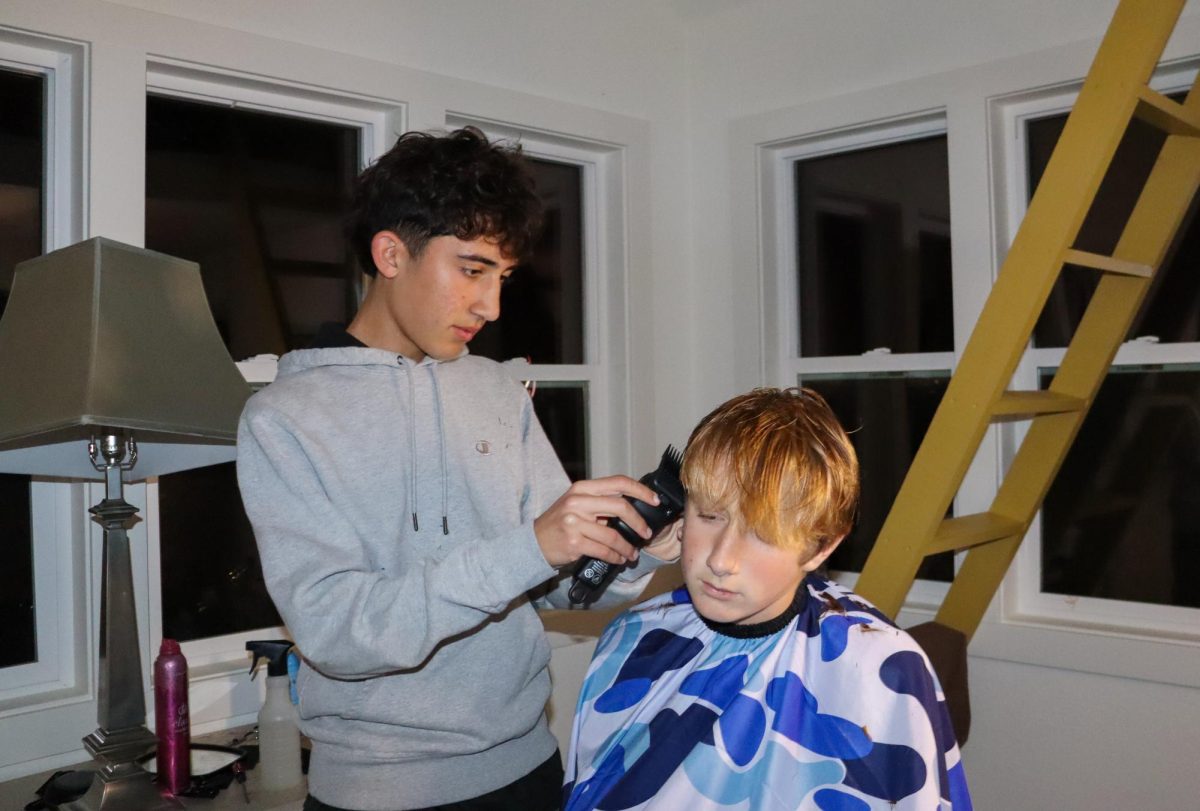On Dec. 2, the University of California (UC) application deadline closed, with California State University (CSU) school applications also concluding in early December. California’s private universities, including Stanford University and the University of Southern California (USC), will cut off applications by February 2025. With the passing of Assembly Bill (AB) no. 1780, this marks the last bout of student applications featuring advantages from legacy and donor admissions.
For years, faced with a series of scandals and struggles, California’s colleges and universities have been tested. Prospective students’ and families’ anger towards the UC system for accepting so few in-state students, shock when the Varsity Blues scandal broke, and frustration at a lack of diversity within schools have continued to test the system’s structure. Californians’ strong emotions have left little room for complacency, despite the state’s overall impressive educational statistics.
The California public school system has three branches: the CSUs, UCs, and the California Community Colleges (CCC). The UCs are the state’s primary collegiate claim to fame and consist of eight campuses, several of which rank among the top 30 schools in the U.S. Facing low in-state acceptance rates at the UCs, irritated California high school residents feel betrayed by the system that was set up for them.
“[The UCs] have gone to this level of competitiveness, and it makes it frustrating, because… as a California student, you should be prioritized… I don’t know exactly how [the UCs consider in-state applicants], but I think that there should be some advantage if you’re living in California,” said Archie Williams senior Landon Sanchez.
According to the UC website, “Admission offers to California resident first-years surged 4.3 percent over 2023. The rise is part of a years-long effort to expand educational opportunities for California students. In fact, the number of first-year admissions to California has increased by 50 percent since 2014.”
However, some Californians feel this increase is not enough. During a March meeting at the State Capitol, California state legislators examined the state’s three public school branches, specifically focusing on the funding going towards its UC system. In the Staff Comments section of the meeting’s agenda, the leaders voiced their continued dissatisfaction with UC acceptance statistics surrounding nonresident and in-state applicants.
“The Legislature has long been concerned about nonresident enrollment at UC and its impact on access for Californians. It is good news to see nonresident enrollment declining, and the percentage of California undergraduates at most campuses growing, although this shift is coming at a significant cost to the state,” the lawmakers wrote. “Progress has been made, but too many very qualified Californians continue to be turned away by UC campuses each year.”
The meeting occurred two months before the failure of California Governor Gavin Newsom’s five-year budgeting plan made for the UC system’s Berkeley, Los Angeles, and San Diego campuses. Initially proposed in 2022, the budgeting change would have allocated more than two billion dollars to the UC and CSU campuses over a five-year period. The plan would’ve helped with financial aid, lessened financial strain, and most pertinently, compensated the UC campuses for their loss of nonresident students’ tuition. However, due to a lack of mobility within the California budget, the proposal was scrapped, and government officials ended up cutting the entire UC system’s budget by 200 million dollars.
With this voiced frustration coming from high up on California’s legislative ladder, the UC system will likely need to continue admitting higher numbers of in-state students to compensate financially, which will impact high school students across California. Without as much additional tuition money coming from out-of-state students, issues that have already reigned on UC campuses, such as housing crises, over-enrollments, and not enough funding for financial aid, are likely to be exacerbated.
Despite this downside, increased acceptances for in-state students would benefit California students and mitigate their frustrations about not having easy access to their public universities. Landon has felt put off by the UC system’s low acceptance rates among residents and believes that the world of public higher education should advantage those currently living in a given state, meaning a change like this would be a step in the right direction for him.
“When I toured the University of Virginia, [I learned that] two-thirds of the students admitted have to be from Virginia, and I think that’s probably the right way to go,” Landon said. “Maybe not as extreme of a ratio, but I think [increased resident acceptances] would be a good thing [for the UCs] to prioritize, just because the point of the state public schools is so that the students of that state have an easy route to get to higher education that’s less expensive but still high quality.”
As for California’s other public systems, the CSUs and CCCs, the issue of in-state acceptance rates hasn’t been quite as significant. The UCs are especially unique because of their prestige and status as some of the top public schools in the country. The universities have become increasingly exclusive and competitive, with over 250,000 high school students from across the nation applying to UC schools for the fall 2024 semester.
Aside from its state schools, California is also home to several top-ranked private universities, including Claremont McKenna, Harvey Mudd, Pomona Colleges, Stanford, and USC. California’s private institutions have also been knee-deep in continuing controversy, which has amassed frustration from students and state officials. One of the most notable examples occurred in March of 2019 and became known as the “Varsity Blues” scandal.
In 2019, the Federal Bureau of Investigation discovered that 33 parents of prospective students at top universities across the country had paid a total of 25 million dollars to William Rick Singer, a college counselor at the time, to bribe admissions officials in hopes of getting their children accepted.
With their funds, Singer inflated students’ test scores, worked his way around various education systems, and bribed admissions officers, staff, and test facilitators. By the end of his career, Singer was found to have unlawfully aided the children of over 750 families across the nation. Among the most financially coerced schools was USC, whose officials were subjected to bribery attempts from over half of the parents.
After authorities dismantled Singer’s operation, the state of California was forced to put its private schools, and the actions of those connected, under scrutiny and rethink the way it dealt with admissions. Countless officials were outraged by this public display of unrestrained privilege, and their fury quickly evolved into the creation of AB 1780, D-San Francisco Assemblymember Phil Ting’s bill that prohibits legacy and donor admissions, come the 2025-26 school year.
“AB 1780 is in response to last summer’s U.S. Supreme Court ruling that bans race considerations in the college admissions process. If race can’t be a factor, I believe wealth or relationships to alumni shouldn’t be considered either. We must put an end to affirmative action for the rich and well-connected,” Ting wrote in a memo. “Hard work, good grades, and a well-rounded background should earn you a spot in the incoming class– not the size of the check your family can write or who you’re related to.”
Newsom signed AB 1780 Sept. 30, marking a notable step in the direction of leveraged privilege and increased racial diversity across the state’s higher education system. Newsom’s act also responded to the Supreme Court’s overturning of affirmative action, the practice of acknowledging students’ racial backgrounds, among other qualities, in public institutions’ admissions processes in hopes of stimulating increased equity. Given this decision, Ting felt inspired to create a bill that would maintain the balance of the scales of racial and privilege-based acceptances.
Archie Williams College and Career Center Specialist Lisa Neumaier has seen the evolution of the California higher education system over the course of her 14 years in the world of academics. She views legacy and donor admissions as two tightly connected phenomena, and due to their exclusivity, has found herself in favor of any change that deactivates the two.
“There’s a trend that goes across both of them, which is privilege. There’s an essence of privilege around [advantages in college admissions],” Neumaier said. “I’m usually going to support rulings that put everyone a little bit more on the same playing field, because then the students’ merit and accomplishments will [be the factors helping them] go to college, and all of those things will play much more of a role than what [their] mom or dad did for work, or how much money they make or where they went to school.”
With the signing of AB 1780, Ting hopes that not only will merit be more considered, but students from places of disadvantage will feel inspired to succeed in higher education.
“Preferential treatment can discourage people from even trying if they don’t have the money or connections. For California high school students, I hope my bill inspires them to pursue the school of their dreams,” Ting wrote. “College degrees change lives and enhance social mobility. In fact, numerous studies show having an education from our most desirable universities has an even larger impact on earnings and career opportunities, especially for first-generation college students. So if applications are considered fairly, everyone can reach for a top-notch institution, instead of settling for less.”
In elevating students with less privilege, AB 1780 is predicted to boost California private universities’ levels of diversity, presumably to a solid degree, considering elite colleges have traditionally had lower levels of racial multiplicity. Alternatively, while the UC system has struggled to admit target numbers of in-state students, what it has succeeded in doing is creating more diversified classes, bridging the educational gap among races in the state. Neumaier believes this is due to a heightened understanding of the importance of diversity in education.
“If you look at [Archie Williams’] mission statement, it talks about really making sure that our [racially diverse students are supported]. And anyone in education realizes that, if you were to look at the stats, more white people go to college, and graduate from college than from other different ethnic backgrounds. So anyone in education knows that that’s the way that is, and how important it is to have diverse thoughts and perspectives [on campuses],” Neumaier said.
If AB 1780 proves successful, California students could expect a statewide increase in college admissions equity and heightened levels of merit-based acceptances. Additionally, if the UCs continue on their path of increased in-state acceptances, students across California might have higher admittance chances, but as the UCs continue to improve, overall acceptance rates are likely to decline.
Despite the financial fallout of rising in-state enrollment, if the state remains dedicated to lifting up students of diverse ethnic and racial backgrounds, the world of academia could take one step closer to total equity.









